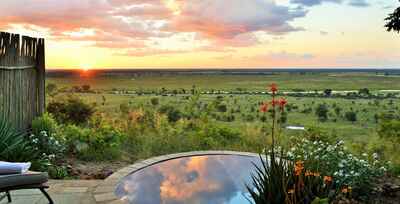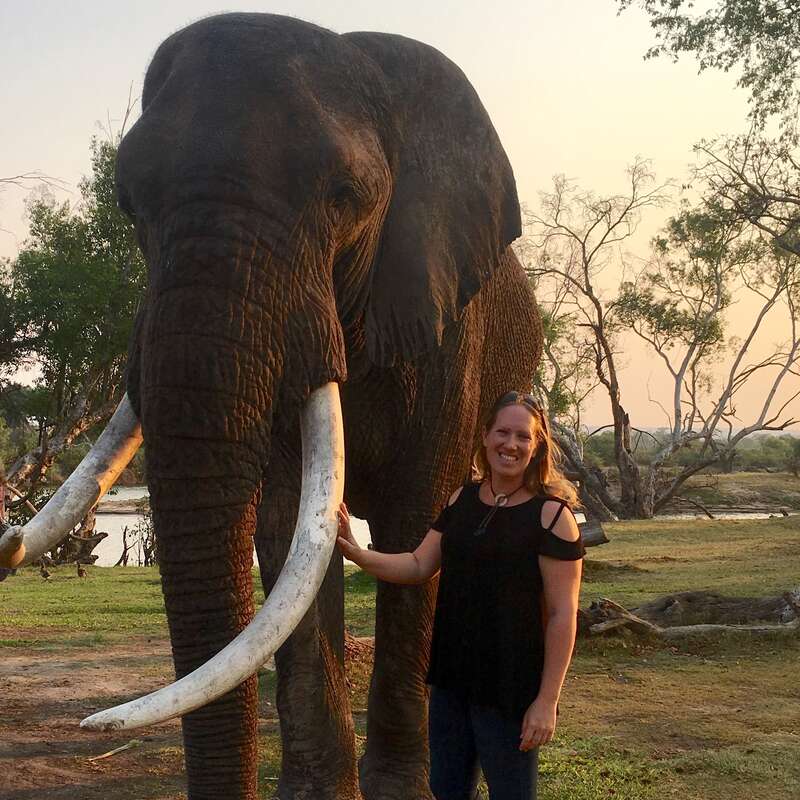About Ngoma Safari Lodge
Small, smart and relaxed yet stylish, Ngoma Safari Lodge is arguably the epitome of contemporary safari chic.
From its vantage point lining the edge of the escarpment, the lodge looks across the Chobe River towards Namibia, the floodplains liberally dotted in the drier months with thirsty zebra, elephant, buffalo and more. Those elephant have even been known to check out the private plunge pools of the lodge’s chalets – though normally you’ll have exclusive use of yours!
This, and almost every feature of Ngoma, shares the panorama, from the patio and outdoor shower of each split-level chalet to the huge glazed windows within, along to the open-sided bar, lounge and dining areas that are terraced down the hillside, culminating in a series of wooden decks and a cooling pool.
Food is taken seriously here, too, with innovative dishes rubbing shoulders with old favourites, while individual tables and flexible timings add a further layer of intimacy.
The lodge’s location in the Chobe Forest Reserve allows for night drives and walks, which are not possible within the national park, though drives into the park and cruises along the river – some from a private jetty – are among the options for a complete yet personal safari.
Stop Press Please note that Ngoma Safari Lodge will be closed for a refurbishment from 5 Jan 2026 until 28 March 2026.
Our view
Ngoma’s open-sided main area and glass-fronted rooms make the most of its spectacular views, while air-conditioned chalets, private plunge pools and first-class food add a touch of class. This is a great lodge for couples, offering a few days of luxury combined with boat and 4WD safaris into some of the quieter areas of the Chobe Riverfront.
Accommodation
8 thatched chalets
Children
Best for 12+
Open
All year
Activities

4WD Safari

Birdwatching

Boat trip

Fishing

Helicopter

Private activities
Traveller reviews of Ngoma Safari Lodge
14 real, un-edited reviews from Expert Africa's travellers.
Arrived 12 Nov 2024, 3 nights
"Ngoma Safari Lodge review"
Overall rating: Excellent
Arrived 29 May 2024, 3 nights
"Ngoma Safari Lodge review"
Overall rating: Excellent
Arrived 16 Sep 2023, 2 nights
"Ngoma Safari Lodge review"
Overall rating: Excellent
Arrived 15 Sep 2023, 3 nights
"Ngoma Safari Lodge review"
Overall rating: Excellent
Arrived 2 Jun 2023, 2 nights
"Ngoma Safari Lodge review"
Overall rating: Excellent
Arrived 7 Nov 2022, 2 nights
"Ngoma Safari Lodge review"
Overall rating: Excellent
Arrived 7 Nov 2022, 2 nights
"Ngoma Safari Lodge review"
Overall rating: Excellent
Arrived 5 Apr 2022, 3 nights
"Ngoma Safari Lodge review"
Overall rating: Excellent
Arrived 10 Apr 2019, 3 nights
"Ngoma Safari Lodge review"
Overall rating: Excellent
Arrived 5 Nov 2018, 4 nights
"Luxurious accommodations in a varied park"
Overall rating: Excellent
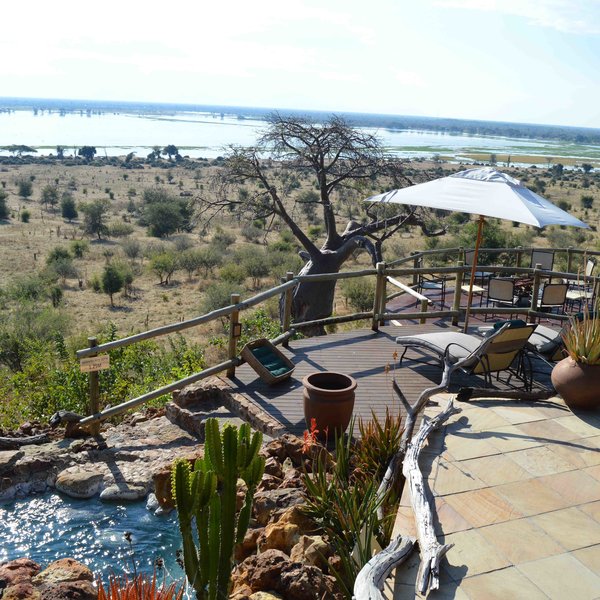
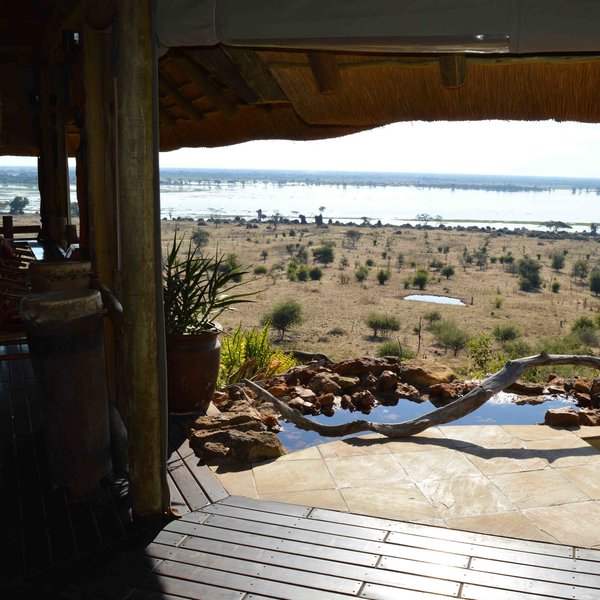
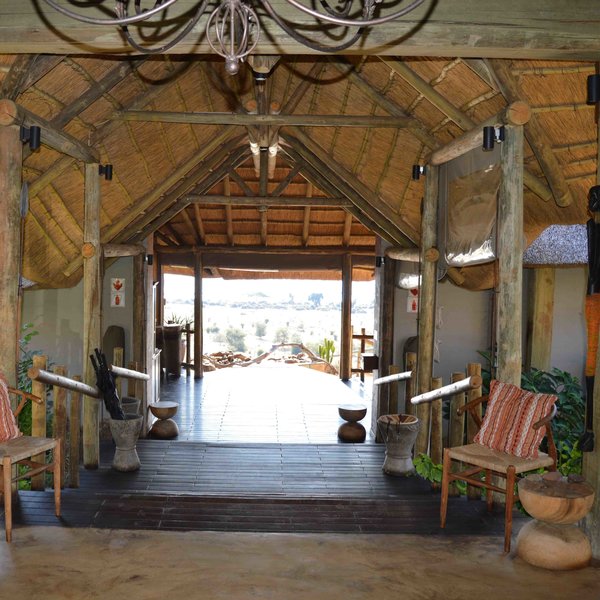
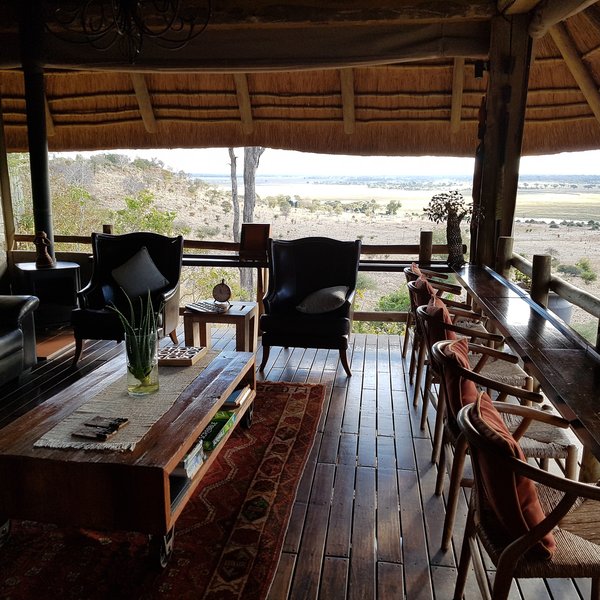
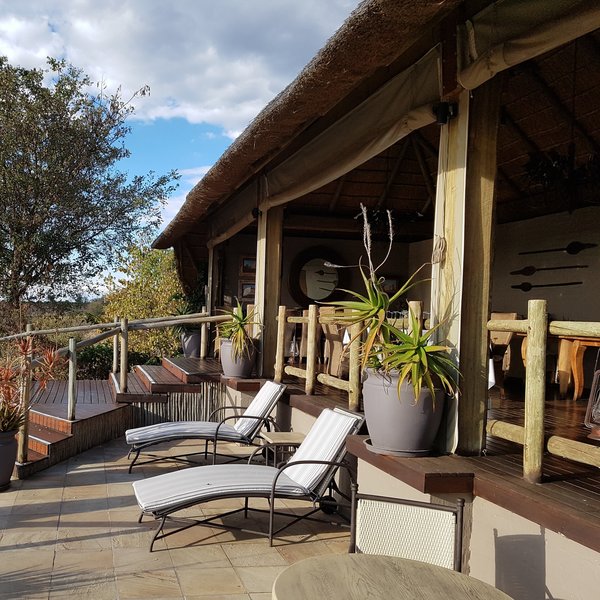
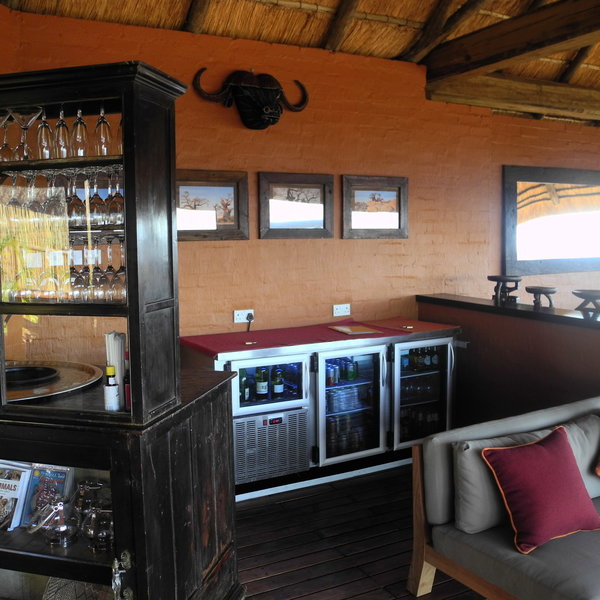
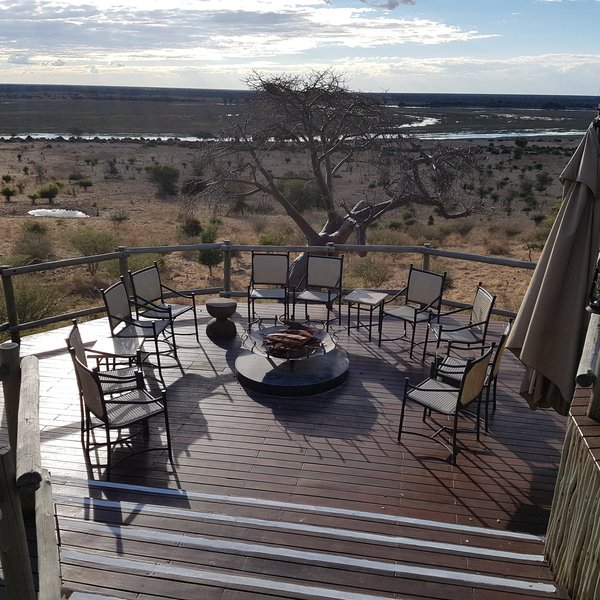
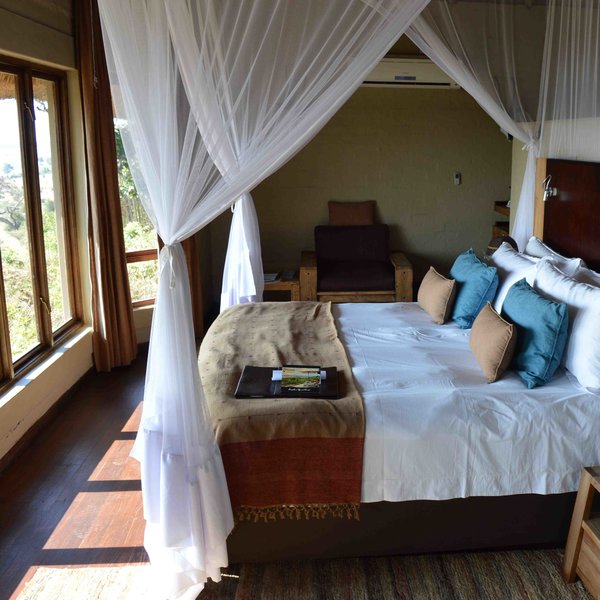
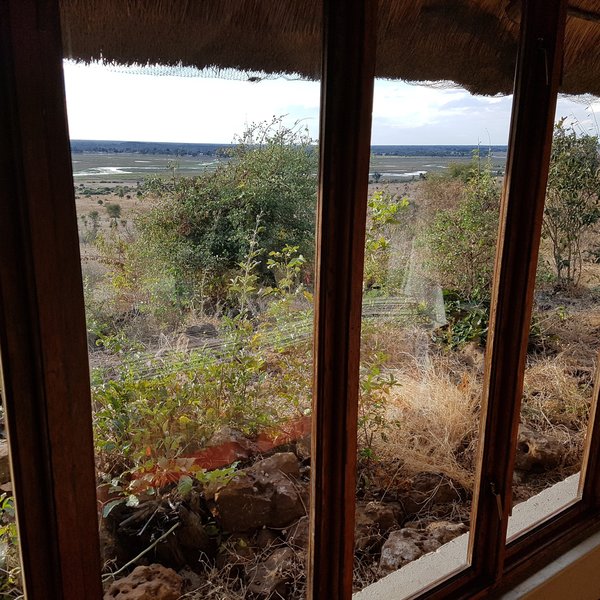
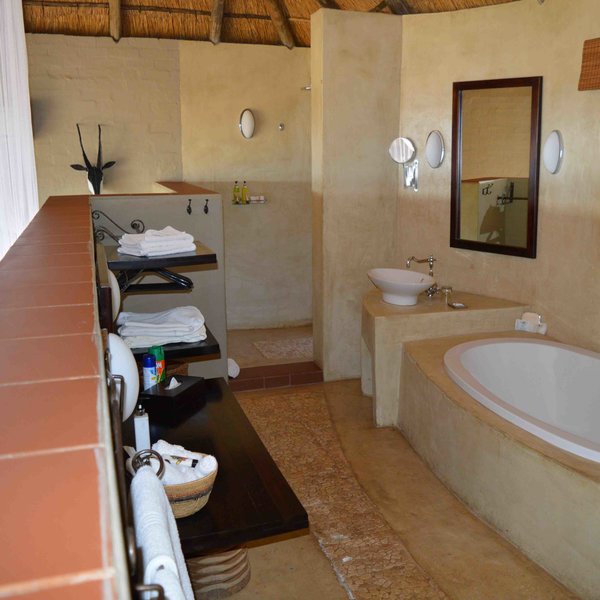
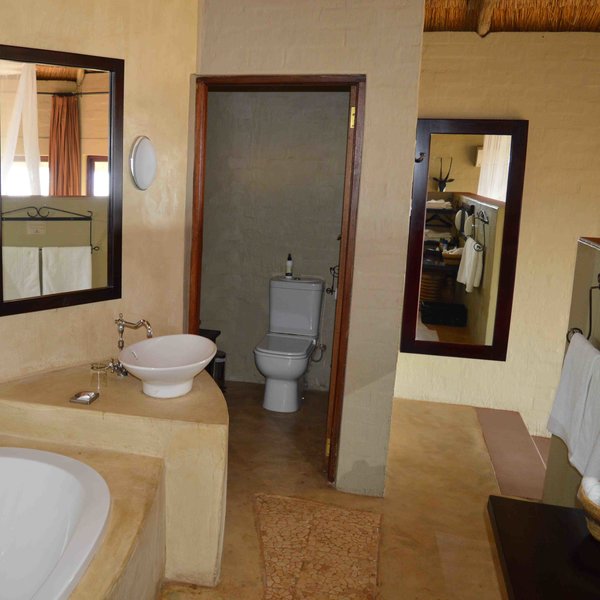
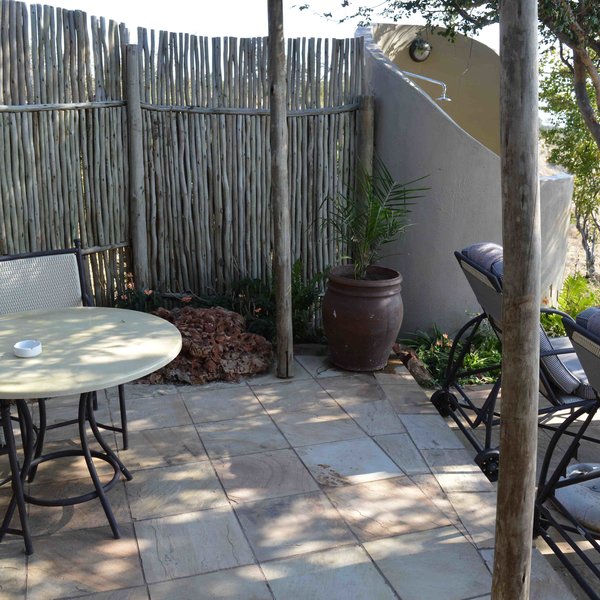
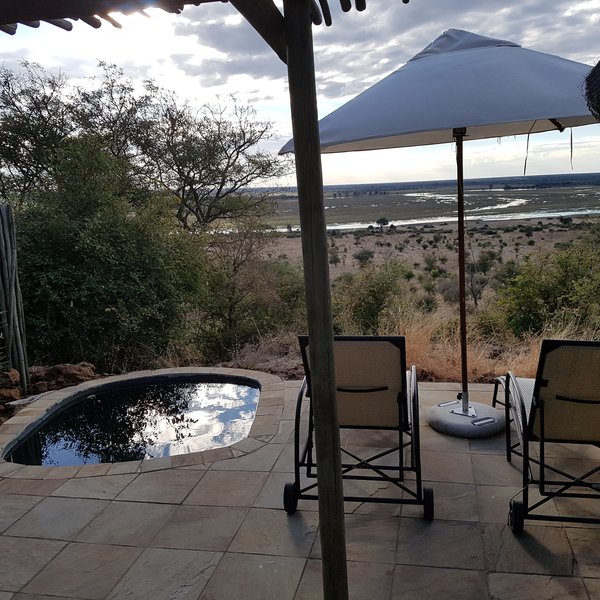
Expert Africa's gallery
When we travel we take lots of photos ourselves to give you a real and un-edited view of the safaris. See our 13 pictures of Ngoma Safari Lodge to get the candid view.
View galleryNgoma Safari Lodge: Our full report
The small, smart Ngoma Safari Lodge lies along the edge of an escarpment high above the Chobe River, with ...
... outstanding views across the floodplains towards Namibia. Light and airy, it is set on several levels across the hillside, making the most of the magnificent views. It is one of a handful of lodges in this north-eastern corner of the Chobe Forest Reserve, close to the quieter, western end of the Chobe Riverfront, which is the focus of most of its game-viewing activities.
Ngoma was originally built as a joint community and privately funded venture in collaboration with the Chobe Enclave Conservation Trust (CECT). In August 2019, Ngoma acquired new owners – with sister camps in the Okavango Delta that we know well and we're very fond of; Gomoti Plains, Kiri Camp, Machaba and Little Machaba.
The thatched entrance shelters the main office and reception area, a light, open space attractively decorated with wooden African artefacts. Step down to the open-sided main area and you’ll find a long, relatively narrow space, rather like a thatched veranda. On one side is a small sitting room and bar, with comfy sofas and a rather superfluous small wood burner; on the other a linear dining room. And always those tantalising views.
More steps lead down to a series of wooden decks, sometimes used for dining on warm evenings; food here is a real highlight. Slightly further down, a small plunge pool is built amongst the rocks, with a couple of sunloungers, and down again are more seating areas with deckchairs. The various decks create relatively intimate areas where you can sit and enjoy the panorama and watch wildlife down on the plains.
Lined up along the ridge, Ngoma Safari Lodge's eight thatched chalets are connected to the main area by gravel pathways. Each chalet has its own small patio, with a table, deckchairs and a private plunge pool– marvellous in the hotter months (and said to be popular waterholes for the local elephants too!). In March 2026 Ngoma will open two new two bedroom family suites.
Inside, the split-level chalets feel quite modern, their décor in muted tones with touches of blue and rust, and with one wall lined by large glass windows to make the most of the views. On the lower level, adjacent twin beds within a large mosquito net face the windows, flanked by a small seating area with comfortable armchairs.
A couple of steps lead up to the en-suite bathroom behind the bed, where there's a (large and comfortable) bath, his and her basins and a big separate shower, as well as plenty of storage space and a small hanging rail. It's all very contemporary and airy, but note that only the toilet is in a separate cubicle with a door; the rest is completely open to the bedroom. An outdoor shower, screened by a wall of wooden poles, is somewhat quirkily set across the patio with views down to the river.
The hot water system at Ngoma is very efficient indeed – delivering very hot, powerful showers and quickly filling the bath with plenty of steaming, crystal-clear water. Each chalet also has air conditioning, a ceiling fan, a tea and coffee station including a Nespresso machine, and a minibar with a small selection of snacks and soft drinks. All have WiFi, too, and phones that connect internally within the lodge.
Like most of the lodges near Chobe National Park, activities at Ngoma Safari Lodge focus on 4WD game drives and boat cruises along the Chobe River. However, because of its location Ngoma is also able to offer night drives and guided walks in the Chobe Forest Reserve – which are not permitted within the national park. The bush walks are led by an armed guide and will usually take place within the vicinity of the lodge. The night drives are normally offered as an extra (and included) activity for an hour or so after dinner. Ngoma can also arrange village and school visits.
The Chobe Riverfront is a prime game area, especially in the dry season, between around July and October. Large herds of elephant, buffalo, zebra and other animals come here out of the dry Kalahari to spend the hottest, driest months within reach of water.
However, it can also be very busy with visitors – with particularly large numbers of vehicles during the dry season coming into the east side of the park from Kasane, and even on day-trips from Livingstone and Victoria Falls. Ngoma’s position, just outside the quieter western side of this riverfront, is a big advantage – generally giving guests a much better game experience than the lodges to the east.
Boat cruises from Ngoma Safari Lodge are usually offered as part of a full-day of activities, with precise arrangements depending on water levels and the season. Often guests begin the day with a game drive to the jetty at Kasane, then spend the middle of the day on a (covered) boat, usually including lunch, before returning to Ngoma on another game drive. Depending on the time of year, one of these drives may be on the (quiet) tar road – to keep the activity within the park rules. These trips – part boating and part driving – make great days, although they are long and some may find them tiring.
Since 2018, Ngoma has had use of a second, private jetty which is much closer to the lodge. So when water levels are high enough, there is now more flexibility in boat cruises.
Though on previous visits we have found the service to be a little slow, on our most recent visit in July 2024 the management was very good and attentive, and the service at Ngoma was friendly and efficient. Activities were arranged with great flexibility and the safari guides were professional and experienced.
Activities
4WD Safari
Birdwatching
Boat trip
Fishing
Helicopter
Private activities
Families & children
- Attitude towards children
- Children aged 12 years and over are welcome at Ngoma Safari Lodge.
- Equipment
- Two of the rooms can be converted into triples.
- Generally recommended for children
- Ngoma has a smart, adult atmosphere with no concessions made to children, and is better suited to couples than families. We would recommend it for well-behaved older children, above about 12 years’ old, who would be comfortable dining in a fairly smart restaurant.
- Notes
- Due to the presence of potentially dangerous wildlife around this unfenced camp, children must be under the constant supervision of their parents. The pool is unfenced and there are steep drops in front of many of the chalets and viewing decks.
Food & drink
- Usual board basis
- Full Board & Activities
- Food quality
- When we visited in July 2024, all dining was done individually, with no shared, communal dining tables. Meals were served at flexible times, to suit individual diners and depending on the timings of your safari activities, which tend to run to a slightly different format than on a standard safari. The food was a real highlight – interesting, imaginative and of a high standard throughout. Vegetarians and other special requirements can be catered for with sufficient notice.
Breakfast is served before the morning activity or full-day excursion. As well as yoghurt, cereal, fruit, muffins, tea and coffee, there is an à la carte menu cooked to order. Alongside the usual “full English” option, with choices of bacon, sausage, baked beans and sautéed mushrooms, there are innovative suggestions like Bell Pepper and Onion Scrambled Egg and Eggs Benedict. Our favourite, Sammy’s Ngoma Breakfast Stack’, was described as:
“Whipped fluffy cinnamon and roasted crushed sesame seed egg white topped with cheddar cheese, crispy bacon, herbed grilled tomato and garlic sautéed button mushrooms drizzled with chopped herb pesto.”
It was very good – and we speculated that the egg yolks not used in this breakfast would have gone to make Ngoma’s excellent home-made ice cream.
Lunch, served after the morning game drive, is from an à la carte menu, with a variety of options, including a burger with many trimmings, bream and chips, and a delicious Moroccan couscous salad. If you are on the full-day excursion, however, your guide will take a packed lunch: a variety of picnic treats such as cold chicken wings, quiche, potato salad, ribs, bean salad and fruit.
Dinner is a three-course set-menu with two options per course. Our dinners were consistently delicious. A typical meal would be a starter of very tasty butternut and ginger soup with croutons and freshly baked bread, followed by a main course of lamb curry with poppadum served on a bean risotto, and rounded off by a delicious apple strudel with fresh custard. - Dining style
- Individual Tables
- Dining locations
- Indoor and Outdoor Dining
- Drinks included
- Bottled water, soft drinks, local beers, spirits and a limited selection of (usually) South African red and white wines are included. Premier champagne and premium imported brands will cost extra and must be requested well in advance.
Fresh bottled mineral water and glasses are kept on a stand by the bed.
Our travellers’ wildlife sightings from Ngoma Safari Lodge
Since mid-2018, many of our travellers who stayed at Ngoma Safari Lodge have kindly recorded their wildlife sightings and shared them with us. The results are below. Click an animal to see more, and here to see more on our methodology.

100% success

100% success

100% success

100% success

100% success

100% success

83% success

83% success

80% success

75% success

67% success

50% success

40% success

0% success

0% success

0% success

0% success

0% success
Getting there
- Location
- Chobe National Park, Botswana
- Ideal length of stay
- As you might expect from a riverine environment, the Chobe Riverfront is a fairly linear game-viewing area – which results in limited variation in the game-drive routes. Because of this, we’d recommend two or three days for a stay here, either at the start or end of your safari in Botswana. Game densities along the Chobe Riverfront usually build from the last rains (typically in April) to their peak at the end of the dry season, in October. That said, so do numbers of vehicles in the park.
Visiting off season, on a previous April visit, as well as in July, we found plenty of game, albeit not a fraction of the high animal densities normal in October. The game that we did see though was exceedingly relaxed and very habituated to vehicles; a large family of giraffe and many antelope beside the road scarcely moved as our vehicle passed. - Directions
- It's roughly a 50-minute drive from Kasane Airport to Ngoma Safari Lodge, largely along a quiet tar road; transfers are made in an air-conditioned minibus.
- Accessible by
- Fly-and-Transfer
Communications
- Power supply notes
- Ngoma is connected to the mains power supply from Kasane.
- Communications
- There is usually some limited cellphone coverage as well as WiFi in the main area and each of the chalets.
- TV & radio
- There is no TV or radio at Ngoma.
- Water supply
- Mains
- Water supply notes
- The chalets at Ngoma have fully plumbed showers, indoor and out, as well as a bath – all with an impressive supply of crystal-clear and very hot water.
Health & safety
- Malarial protection recommended
- Yes
- Medical care
- The nearest doctor is in Kasane. Management and guides are first-aid trained and medical evacuation is available in case of emergency.
- Dangerous animals
- High Risk
- Security measures
- Guests are escorted to their chalets after dark as dangerous wildlife is known to wander through the camp. A thorough safety briefing is given on arrival. Mobile, electronic “panic buttons” are provided in the chalets to summon help in case of emergency.
- Fire safety
- There are fire extinguishers at all the chalets and in the main area.
Useful info
- Disabled access
- On Request
- Laundry facilities
- A full laundry service is included. Laundry is collected in the morning and usually returned the same day, weather permitting.
- Money
- No exchange facilities are offered at Ngoma. There are sizeable electronic safes in all the chalets.
- Accepted payment on location
- Mastercard and Visa credit cards are accepted. Diners and Amex cards are not. Cash payments may be made in South African rand, GB sterling, US dollars, euros and Botswana pula.
Plan and book your trip with Expert Africa
All of our trips are tailor-made, so we'll always adapt them to suit you. Talk to an Expert and let us plan and arrange your perfect trip.

Talk to an Expert
Call or email us now! We’ll match you with the Specialist in our team who is best suited to help you. Then together we can start planning your trip.

Set up your itinerary
Based on our experience and your ideas, your specialist will create a detailed, costed itinerary. We’ll refine it together, until we have a trip that you’re perfectly happy with.

Prepare for your trip
The same Specialist will make the seamless arrangements for your trip, send you detailed travel documents, and be available to answer any questions before you depart.

Travel with peace of mind
After you set off, you’ll be cared for by our partners in Africa, most of whom have worked with Expert Africa for decades. And if you ever need us urgently, we’re available 24/7.

When you return
We love to learn about your trip, and so will always be grateful if you’ve the time to give feedback to your Specialist when you return.
Ngoma Safari Lodge's location
Look closer at the environment and surroundings of Ngoma Safari Lodge.
Excursions from Ngoma Safari Lodge
Optional extra day-trips and excursions possible whilst you're staying at Ngoma Safari Lodge. Talk to us: these are usually best arranged before you go.
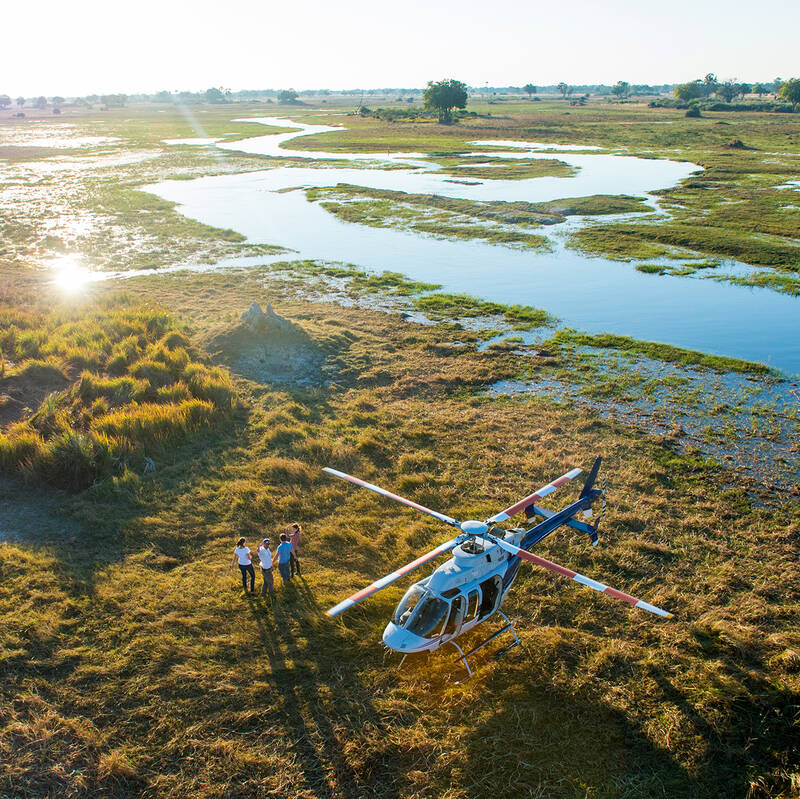
Helicopter Flight - Botswana
Various: from 30 minutes to half a day.
Low-flying, agile and offering superb views, helicopters are an ideal way to move around the Okavango Delta.You can use them instead of fixed-wing inter-lodge transfers or as an addition to other wildlife watching activities, and of course, helicopters can hover to allow that perfect pic, whereas fixed-wings can’t.
More about Helicopter FlightOther lodges in Chobe National Park
Alternative places to stay in this same area.
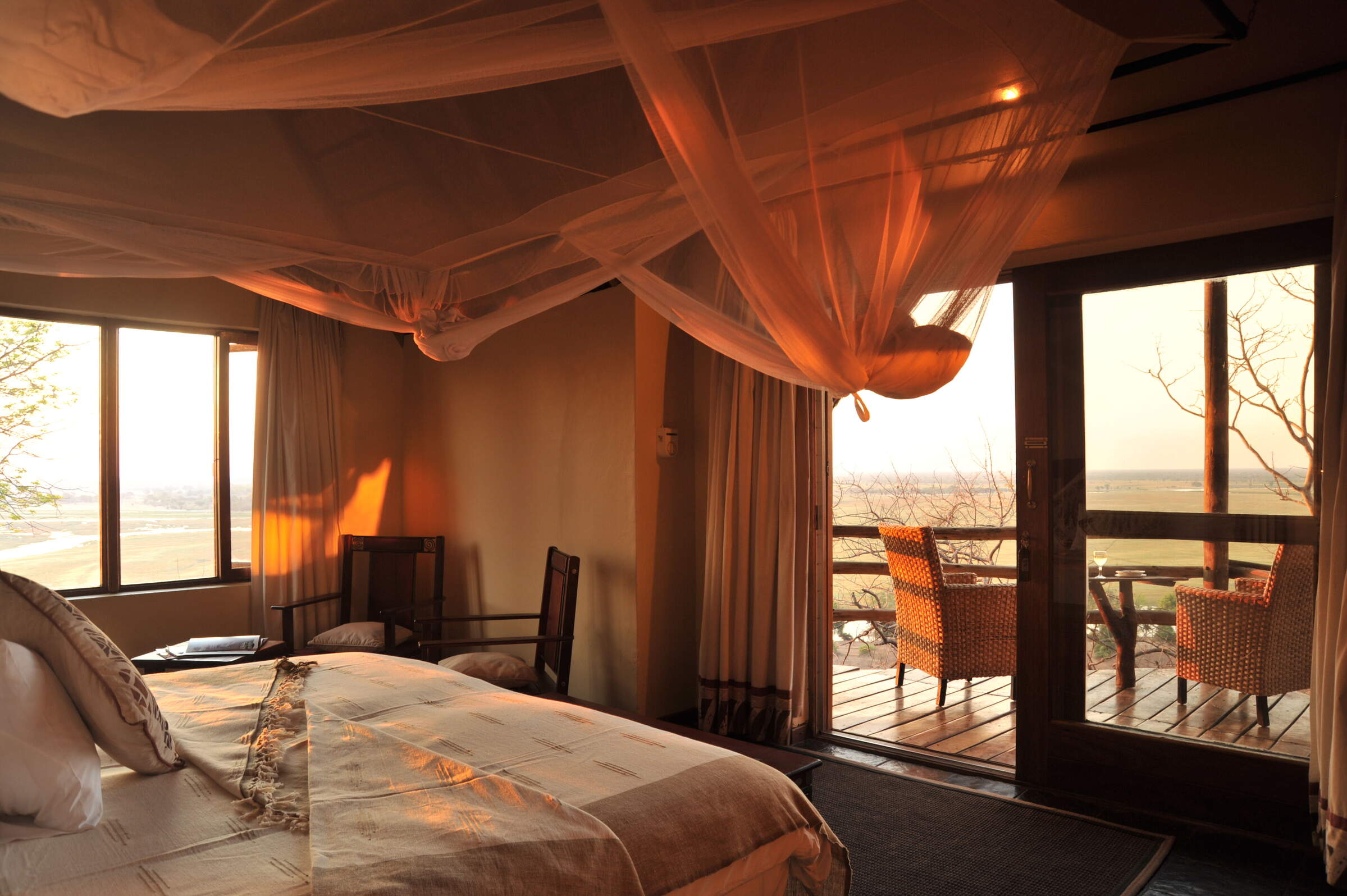
Muchenje Safari Lodge
One of our favourites in the area, Muchenje is a small, welcoming lodge at the quieter, western end of the Chobe Riverfront.
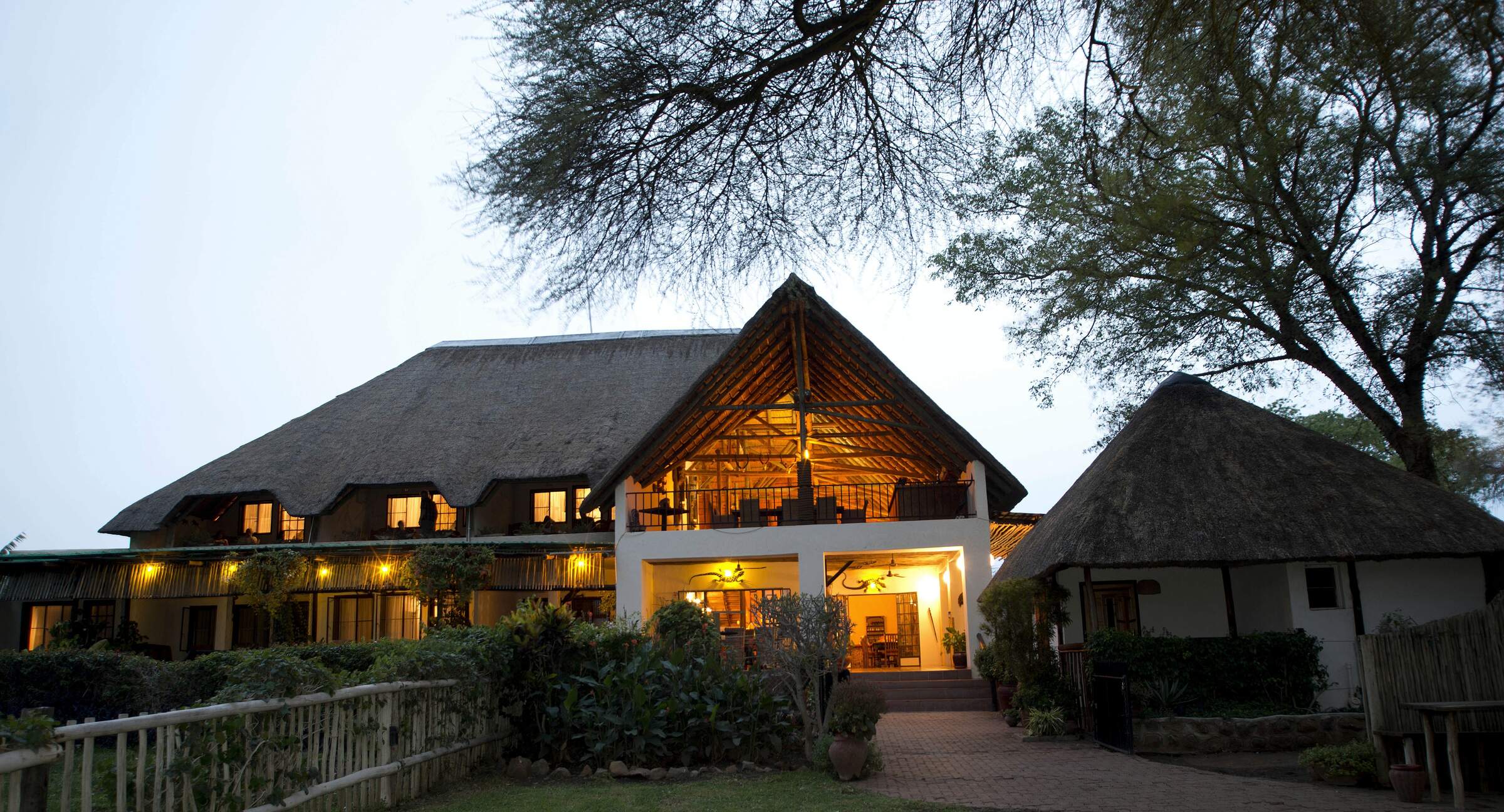
Chobe River Lodge
Overlooking the Chobe River, the intimate Chobe River Lodge is a haven of tranquillity away from the bustle of Kasane.
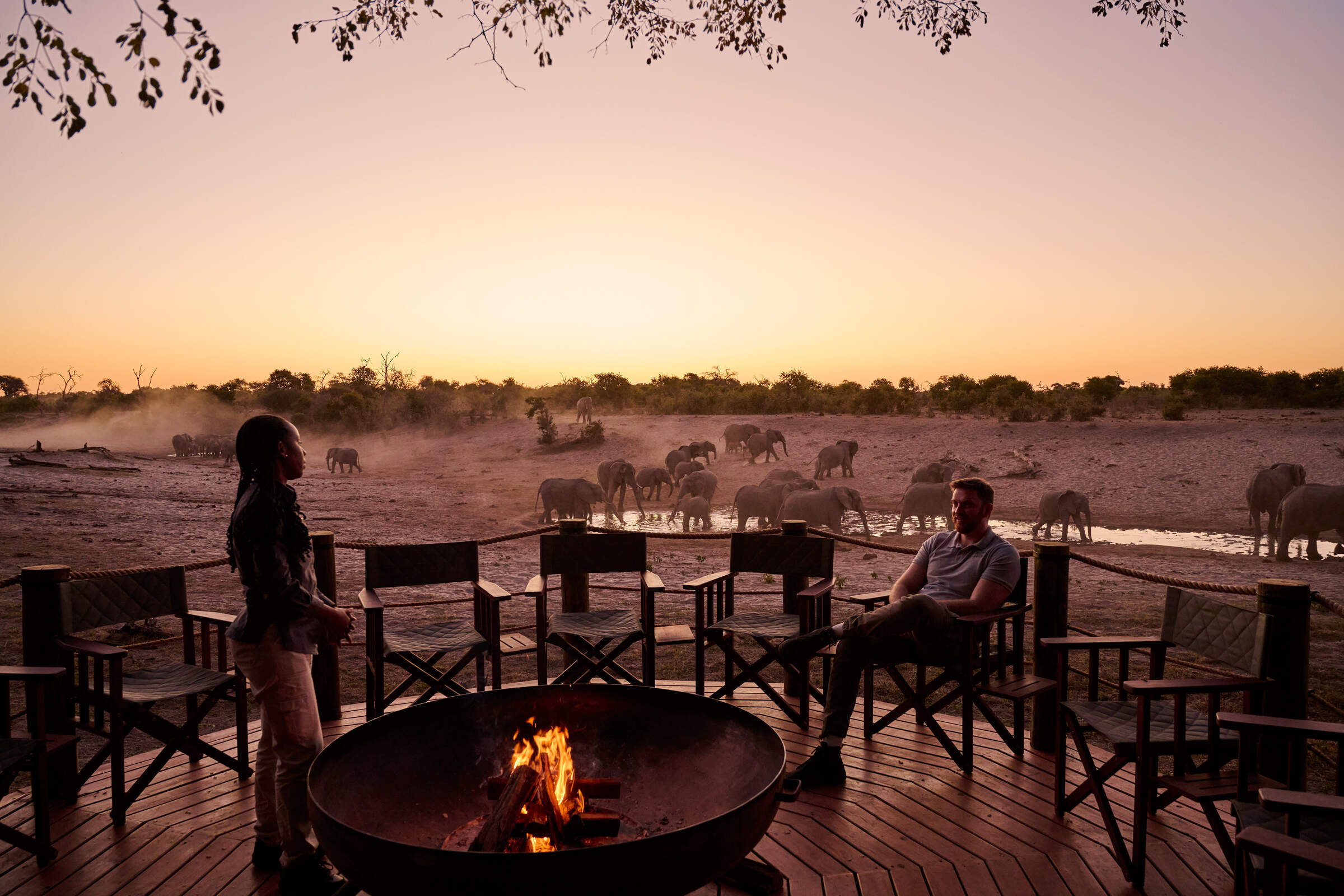
Savute Safari Lodge
Savute Safari Lodge sits on the banks of the Savuti Channel within Chobe National Park, and offers access to excellent game viewing, especially during the dry season.
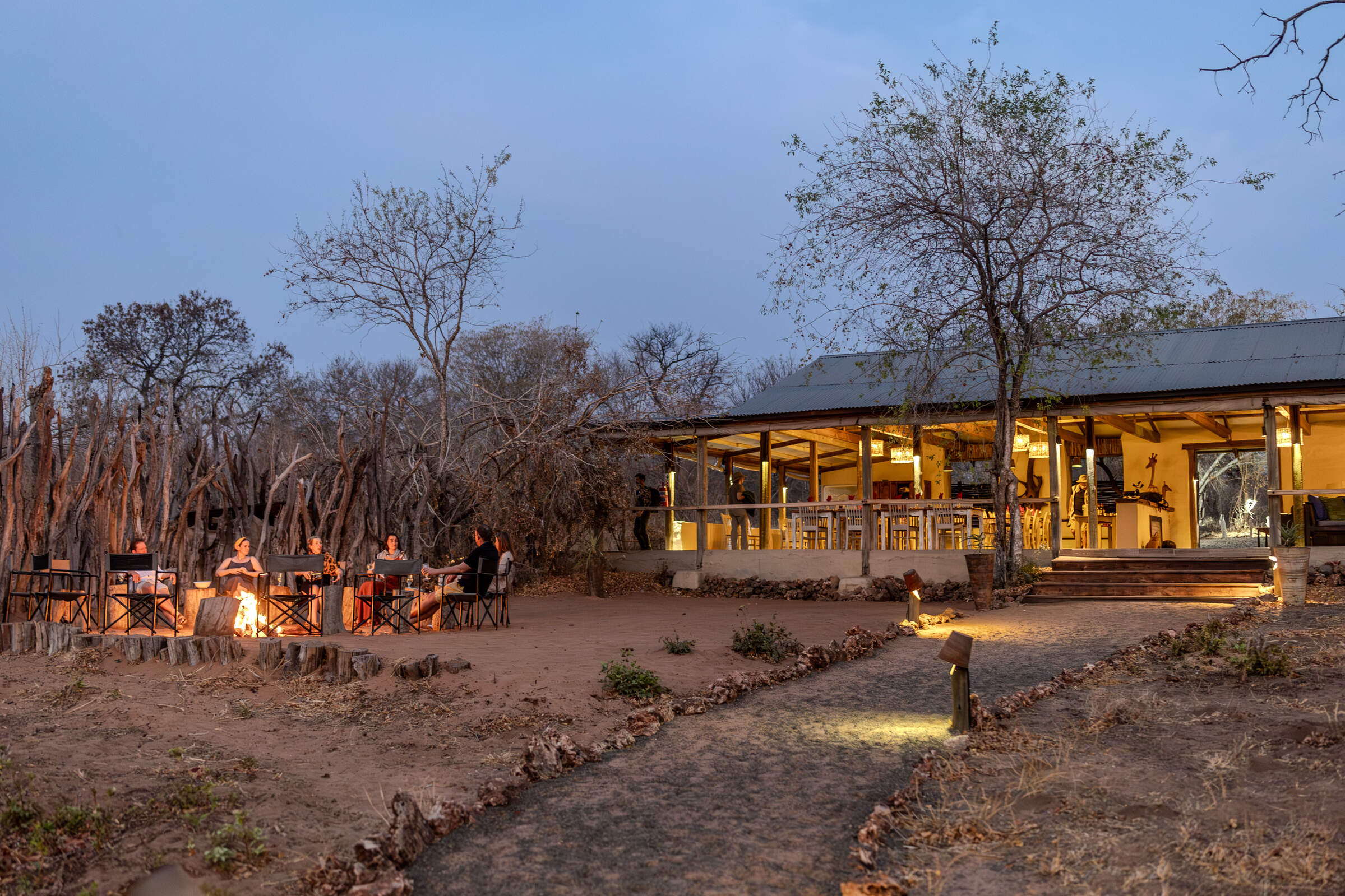
Chobe Elephant Camp
Located in one of our favorite areas of Chobe National Park, Chobe Elephant Camp is a simple but well-appointed camp with a strong bush feel.
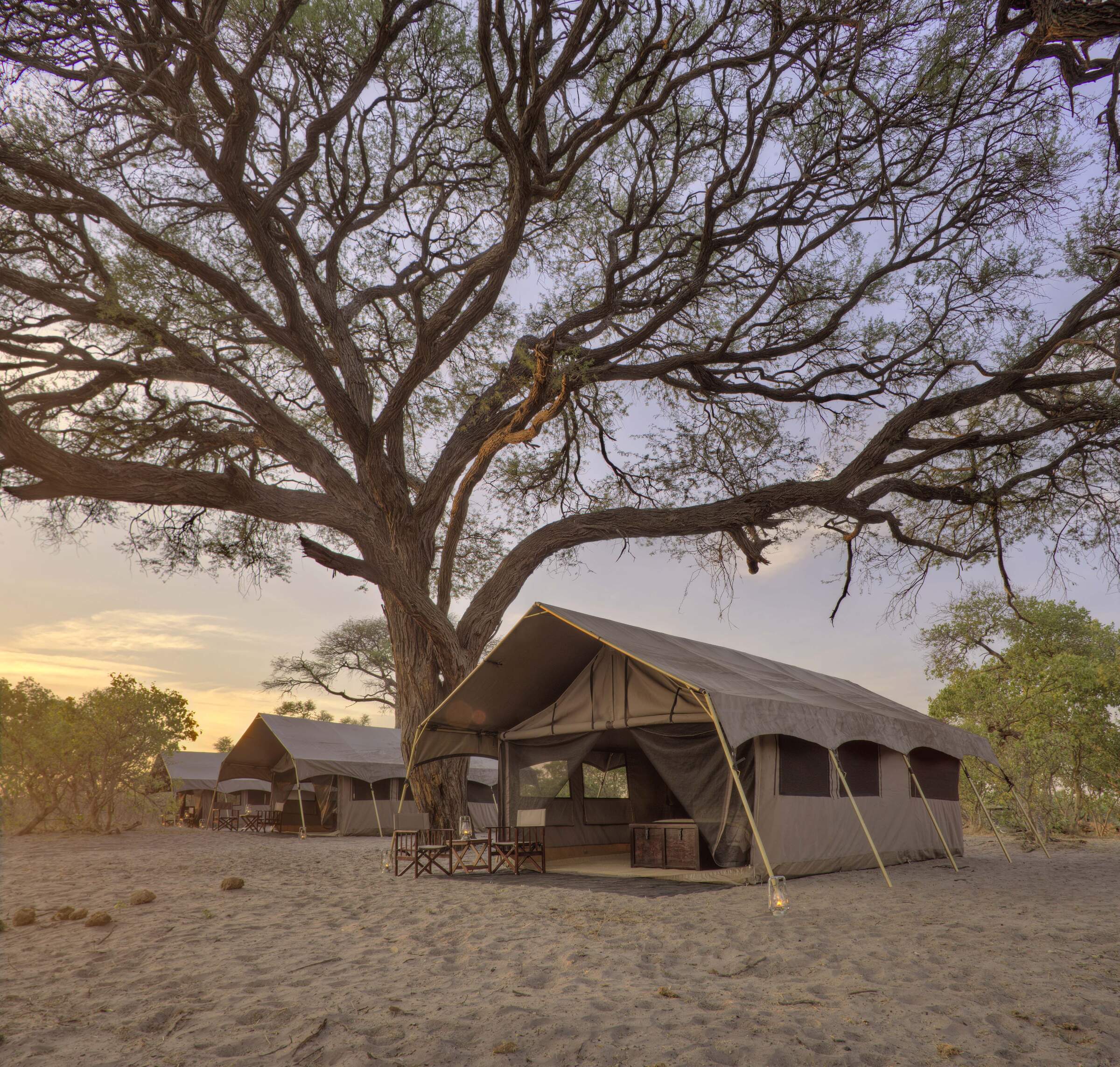
Savute Under Canvas
A mobile camp with the comforts of a semi-permanent tented camp, Savute Under Canvas offers guided game drives within the Savuti region of Chobe National Park.
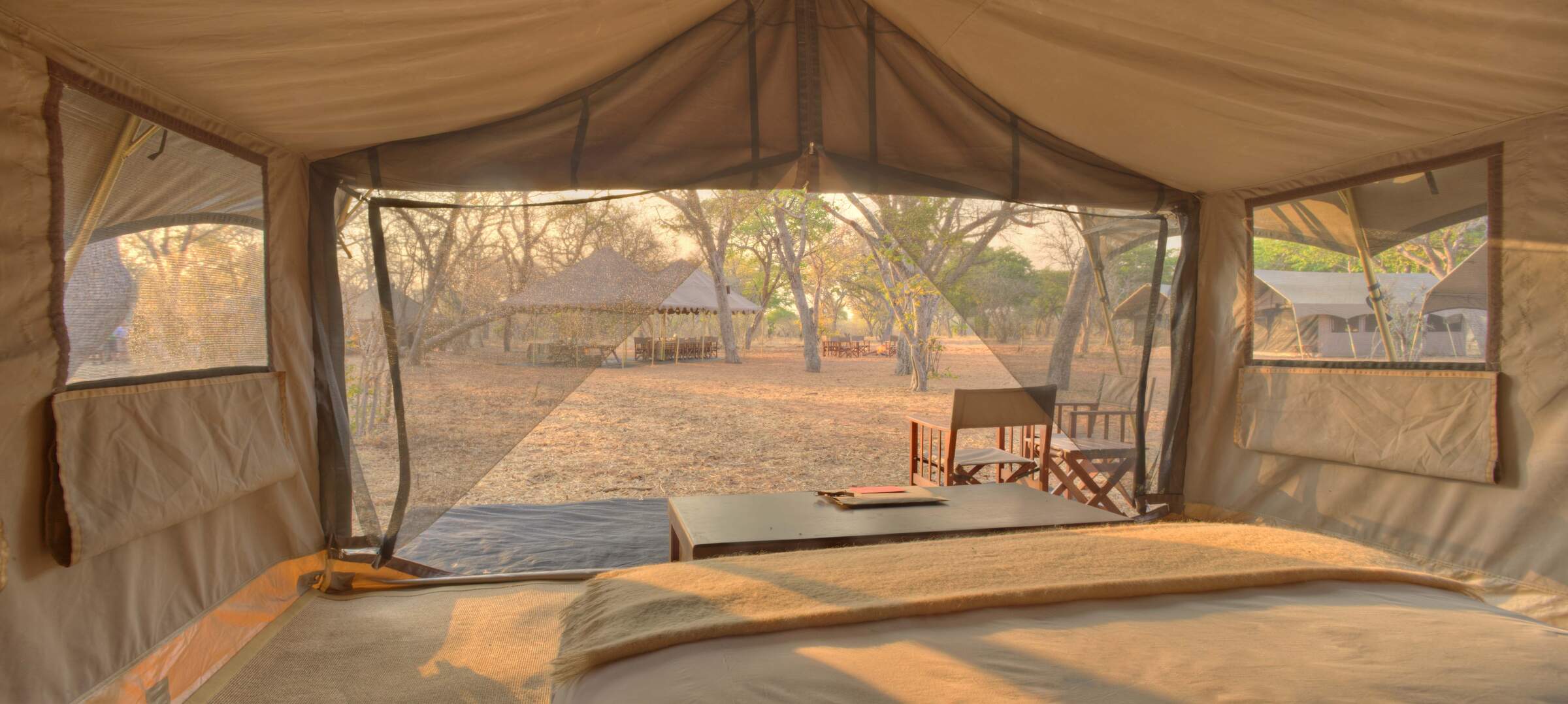
Chobe Under Canvas
This is a typical location for Chobe under Canvas, a small, semi-permanent camp in the Chobe Riverfront area that offers good value for money and high standards of care.
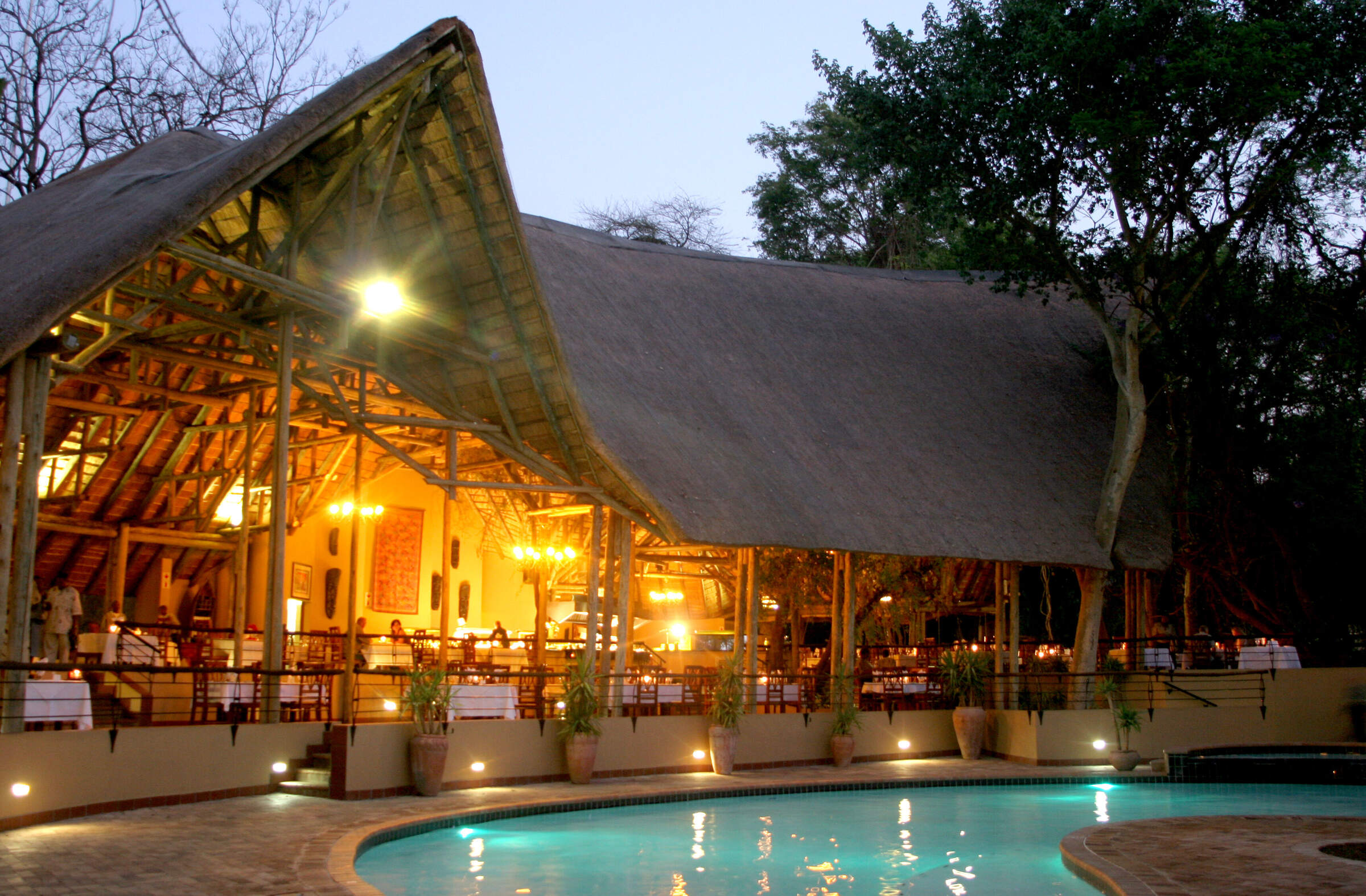
Chobe Safari Lodge
Chobe Safari Lodge is a good value, hotel-style lodge in the heart of Kasane offering game drives, boat cruises and fishing trips.
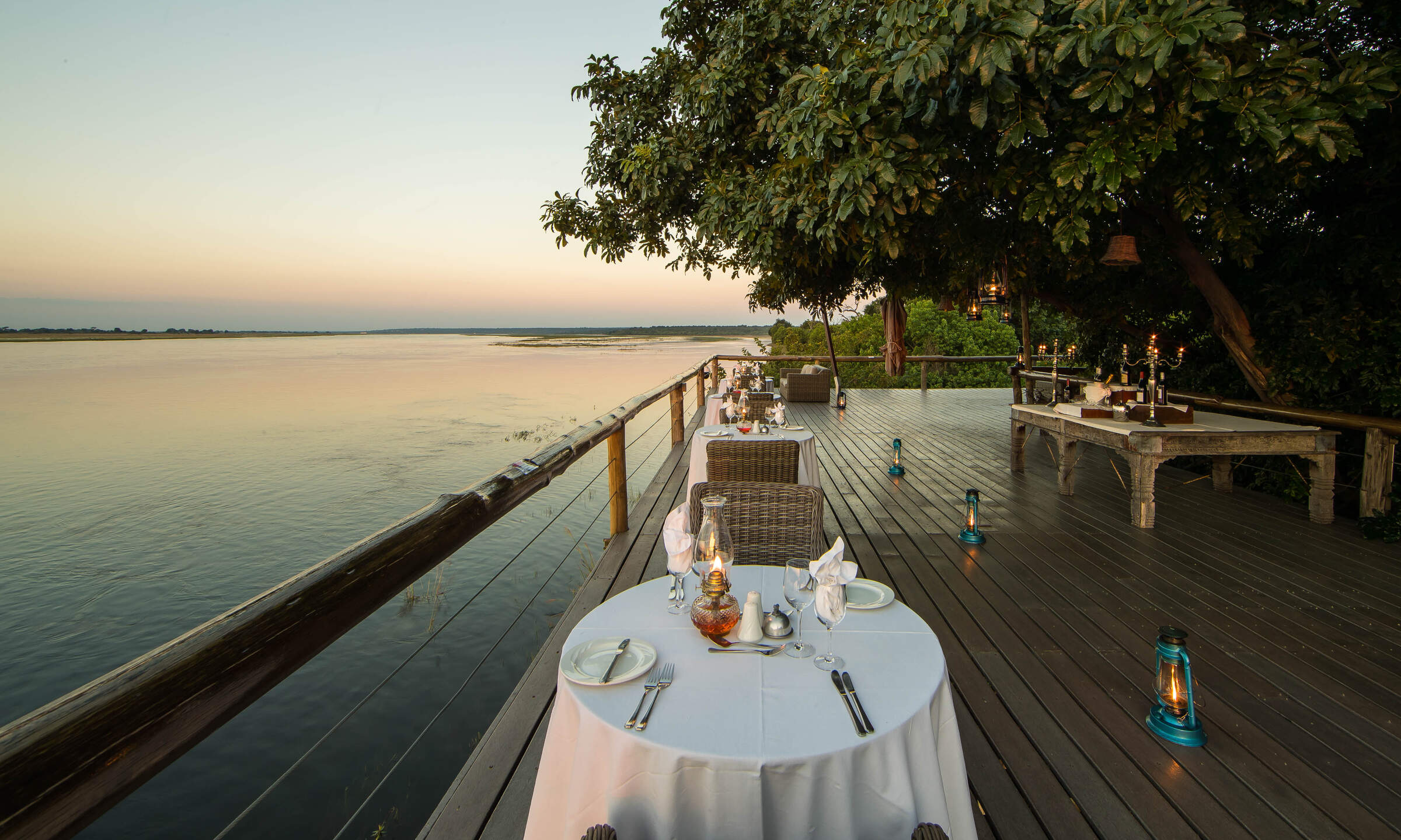
Chobe Game Lodge
Chobe Game Lodge occupies an enviable riverfront location within Chobe National Park and boasts well-earned 'eco' credentials, as well as an excellent all-female guiding team.
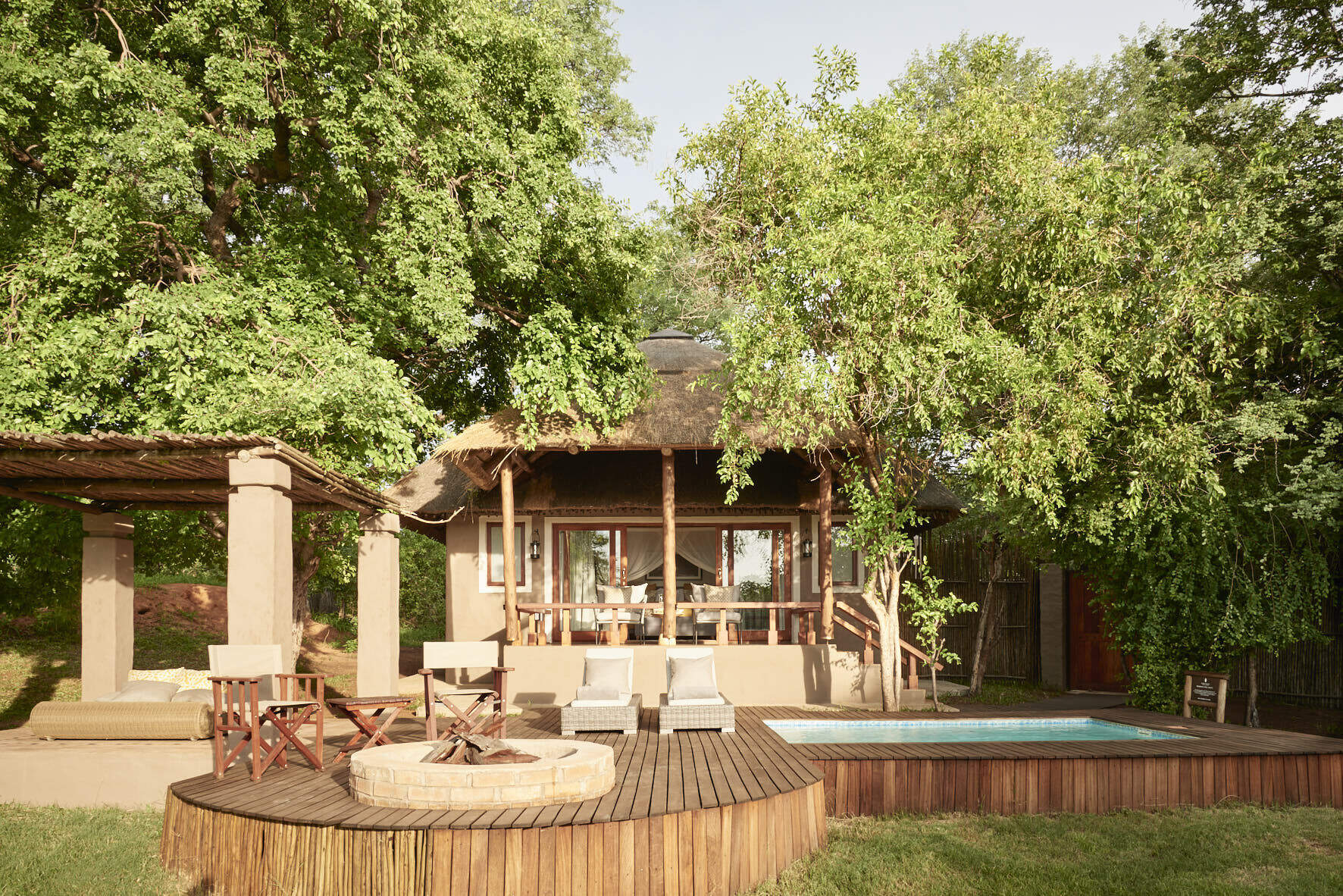
Chobe Chilwero
On the periphery of Chobe National Park, Chobe Chilwero offers luxurious surroundings and excellent food, which complement superb game viewing on game drives and boat trips.
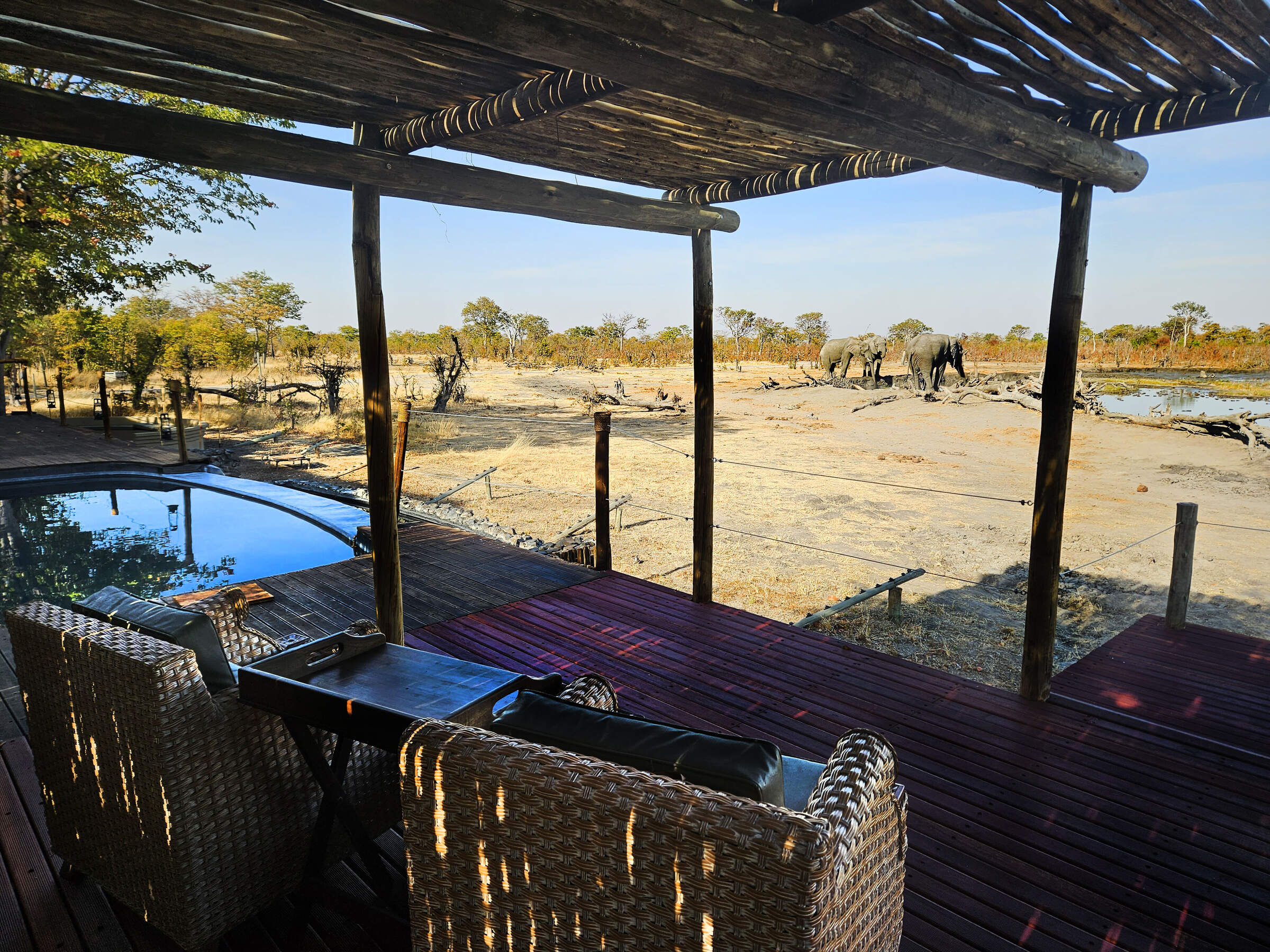
Camp Kuzuma
Camp Kuzuma sits in the Kazuma Forest Reserve and is an excellent place to see elephant in particular. Away from the busier riverfront area of Chobe National Park this camp offers a luxurious base form which to explore this less visited region of northern Botswana.
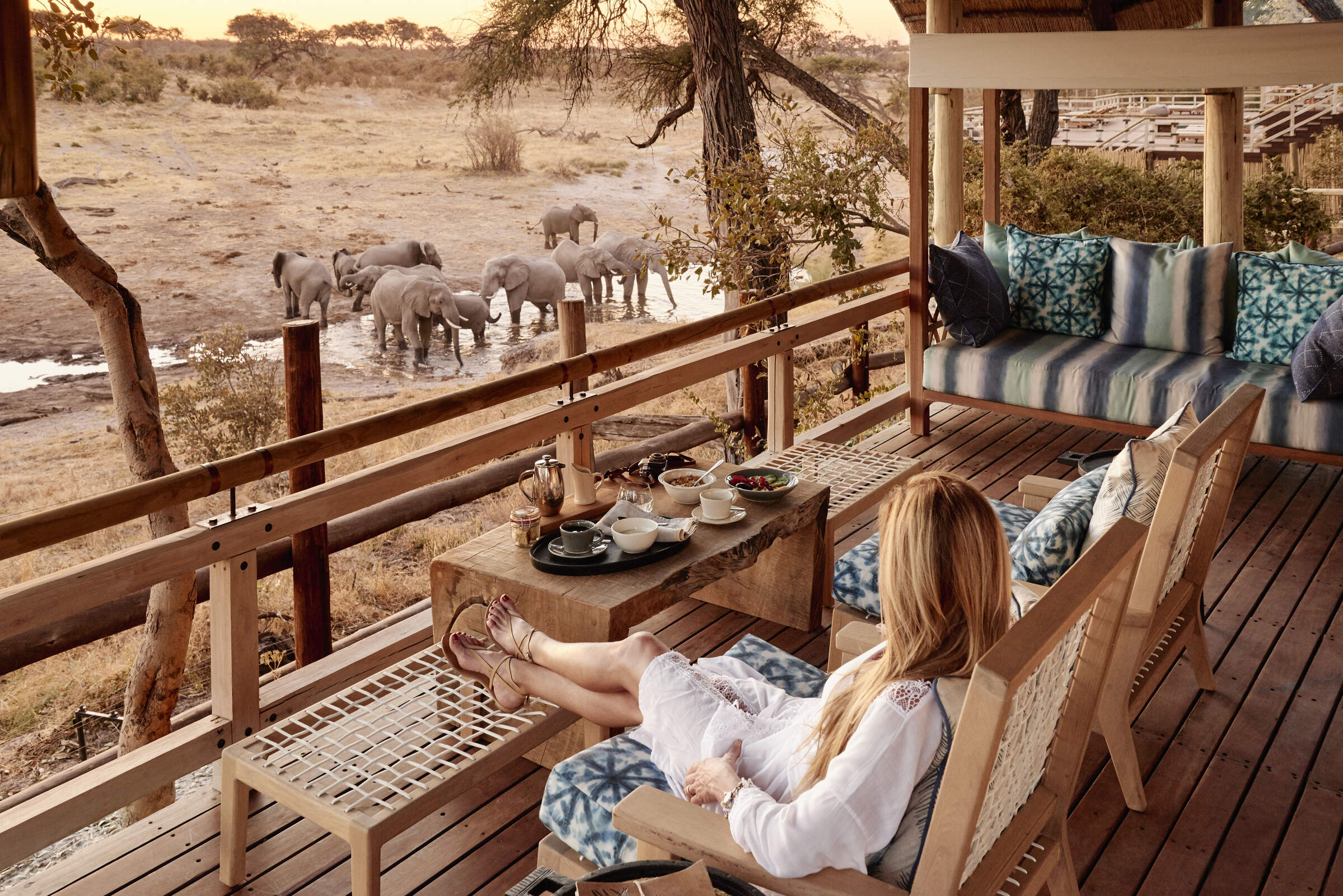
Savute Elephant Lodge
Savute Elephant Lodge is a luxurious camp on the banks of the now flowing Savuti Channel. This is a classic big-game area, although its location within Chobe National Park does limit the activities which are possible here.
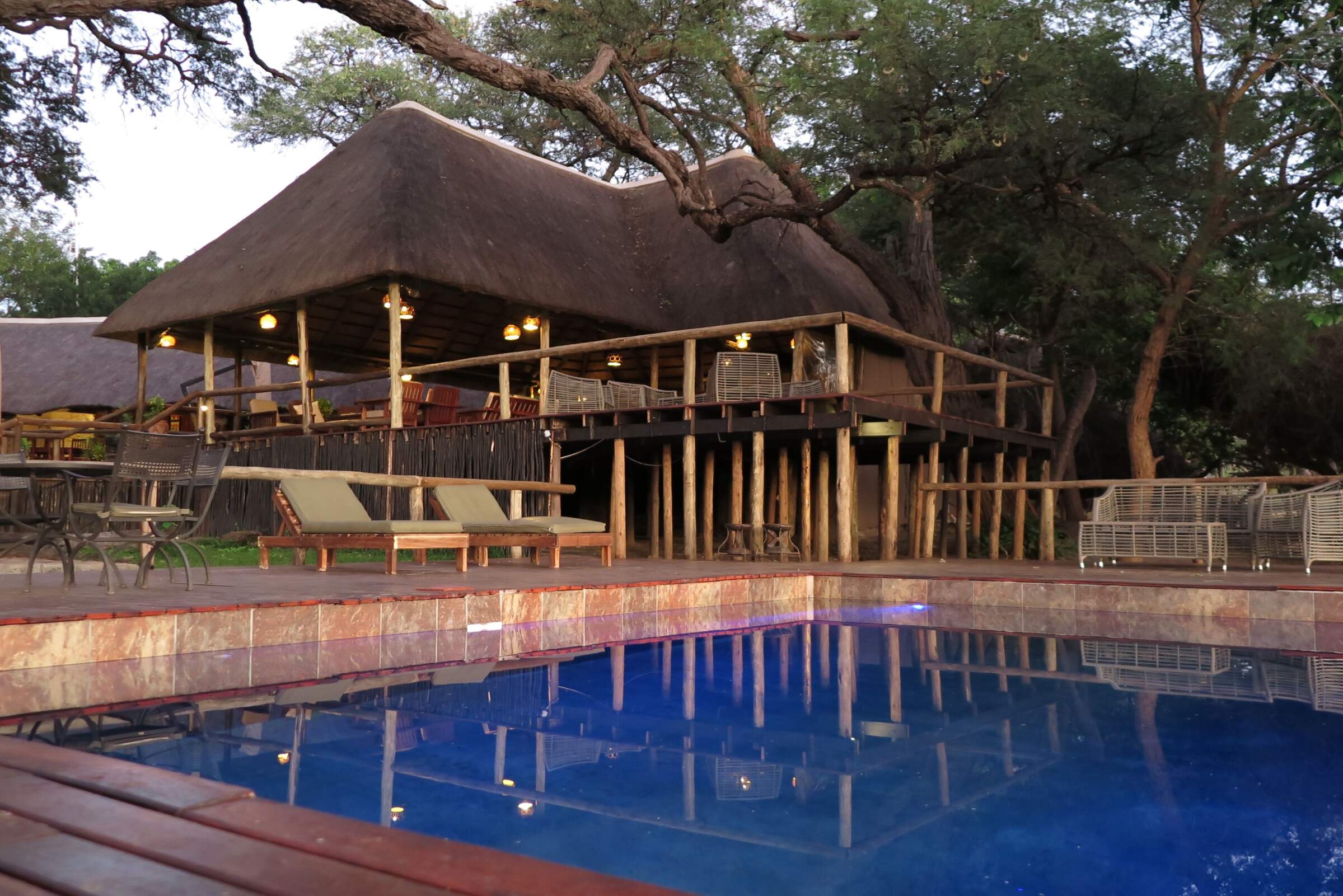
Elephant Valley Lodge
Elephant Valley Lodge is a lovely camp in a beautiful setting – sit in its hide and watch the wildlife come to drink at the waterhole. Activities focus on boating and drives in Chobe which - although very busy, and a long drive from the lodge – is very rich in wildlife.
When to go to Chobe National Park
Our month by month guide: What it's like to visit Ngoma Safari Lodge in Chobe National Park
Jan
Feb
Mar
Apr
May
Jun
Jul
Aug
Sep
Oct
Nov
Dec
Chobe National Park in January
January marks the peak of the rainy season in Chobe National Park. Evening rains are typically brief but heavy, often accompanied by thunderstorms. While temperatures remain high, they are slightly cooler compared to earlier months. Wildlife tends to be more dispersed, making it harder to spot animals. Big game densities near the Chobe Riverfront are relatively low, but some resident species, like giraffes, are accustomed to vehicles and can appear so relaxed that they seem almost tame.
The Savuti Marsh becomes lush and green, attracting herbivores. Migratory birds abound throughout the park, with the Linyanti Marsh being particularly rich in birdlife during this period. January is an excellent time for visitors interested in lush landscapes and diverse birdlife. Lower rates at many lodges make this a good time to visit on a more moderate budget.
- Warm temperatures with occasional thunderstorms
- Birdlife at its most spectacular in Chobe
- Big game dispersed across the park
- Seek most wildlife away from the river
- Good availability and rates in Chobe’s lodges and camps
Our view
A good time to visit, with pros & cons
Weather in January
Chobe National Park in February
February in Chobe National Park is similar to January, with heavy rains most days, often towards evening. The landscape is green and alive, with insects and smaller animals more easily seen. Many birds and animals are raising their young, especially in the Linyanti and Savuti areas, making for lovely family group sightings. The Chobe River swells, creating a spectacular landscape and attracting diverse wildlife. However, the rains create pools and waterholes in the bush, which combined with thicker vegetation makes it harder to spot larger animals.
The Chobe Riverfront area still offers a good wildlife experience as although much big game has moved away, the animals that remain are often more relaxed. Boat cruises on the Chobe River provide excellent opportunities to observe wildlife from a different perspective. Visitor numbers remain low, with good rates and more availability in camps and lodges.
- Warm with occasional thunderstorms in Chobe
- Vegetation running riot; smaller wildlife thriving
- Many animals with young in the park
- Big game dispersed throughout Chobe
- Low visitor numbers, good camp availability
Our view
This is not a great time to visit
Weather in February
Chobe National Park in March
March typically marks the end of the main rainy season in Chobe National Park, with showers gradually tapering off. Many days are characterised by clear skies, intense sunshine, and rising temperatures. Short afternoon thunderstorms may still occur, while the park's landscape remains lush and vibrant. During this time, many birds and animals complete the process of raising their young. The Savuti Marsh area becomes particularly fascinating as predators exploit the vulnerability of the young and weaker prey.
The Chobe River levels start to stabilise, offering excellent boat safari opportunities. March can also be a good time to explore the Linyanti area, where many animals congregate as other water sources begin to dry up. With fewer visitors in most areas, rates are still be relatively low at lodges and safari camps.
- Variable weather, rains tailing off in Chobe
- Occasional small thunderstorms in the park
- Many animals finish raising young in Chobe
- Birdlife still spectacular along Chobe River
- Few tourists, often lower rates in lodges
Our view
A good time to visit, with pros & cons
Weather in March
Chobe National Park in April
During April, rains in Chobe National Park have usually stopped, though there may still be the odd afternoon downpour. This results in clear skies and a lovely green, lush landscape. Night-time temperatures start to drop, and are especially noticeable in the Savuti area. The Chobe Riverfront begins to flourish at this time, with the numbers of elephants and other wildlife gradually increasing along the river.
The Savuti region is a particular favourite during this time, with good predator-prey interactions on display. April marks the beginning of the shoulder season for many camps, so rates are on the rise but still relatively moderate. This is an excellent time for photographic safaris, as the air is clear and the landscape still green.
- Cooler evenings, occasional showers in Chobe
- Northern Chobe lush and green
- Good predator-prey interaction observable
- Savuti area best for wildlife viewing
- Popular shoulder season, relatively low rates
Our view
A good time to visit, with pros & cons
Weather in April
Chobe National Park in May
May is a very popular month to visit Chobe National Park, often the last month of the shoulder season before camp rates hit their peak. While there is very little chance of rain, the annual floods from Angola start to make their way through the northern part of the park. With cooler temperatures in the morning and evening, predator activity tends to be higher, especially in the Savuti and Linyanti areas.
The Chobe Riverfront becomes busier with wildlife as water dries up elsewhere, making it an excellent time for boat cruises on the Chobe River, where close encounters with elephants and other wildlife are a real treat. Away from the water, game drives in the park's interior become more rewarding as vegetation thins out and sightings improve. May is a favourite time for many visitors, and camp bookings throughout Chobe are start to be snapped up quickly.
- Cool mornings and evenings, little rain in Chobe
- Game viewing beginning to improve
- Predator activity increasing in Savuti
- Last month of shoulder season for most camps
- Availability decreases throughout Chobe
Our view
A very good time to visit
Weather in May
Chobe National Park in June
June marks the real start of the dry season in Chobe National Park. Temperatures are cool in the mornings and evenings, occasionally reaching freezing at night, and rising to 25-30°C/77-86°F during the day. This brings a certain clarity to the air and clear blue skies, making it a favourite month for serious photographers. Surface water and smaller natural waterholes are now drying up, leading wildlife to congregate around the remaining large water sources, including the Chobe River.
Visibility improves as the grass dies back, making game viewing very good throughout the park. The Savuti Channel and Linyanti areas see increased predator activity. June is an excellent time for both land and water-based safaris in Chobe, so not surprisingly, camp availability becomes scarce and rates climb.
- Warm days, cold nights in Chobe National Park
- Excellent conditions for wildlife photography
- Animals congregating at Chobe River
- Grasses dying back, improving visibility
- Peak season begins, rates increase
Our view
Fantastic: the very best time to visit
Weather in June
Chobe National Park in July
July in Chobe National Park offers cold evenings and mornings, combined with great daytime game viewing; this makes it one of the most popular times to visit. Vegetation is really thinning out, making game ever-easier to spot, with the few remaining waterholes attracting large congregations of wildlife species. The Chobe Riverfront is increasingly rewarding, with large herds of elephants and buffalo congregating along the river.
However, this area is now becoming busy with visitors. Game viewing is good in the Savuti area too, with frequent predator sightings. The Linyanti Marsh attracts diverse wildlife, including rare species like wild dogs. Camps are now very much into the peak season and tend to be full. Advance booking is essential for popular lodges and camps.
- Comfortable days, cold nights in Chobe
- Excellent game viewing as vegetation dies back
- Chobe Riverfront becomes busy with wildlife
- Private concessions offer exclusive experiences
- Peak season, higher rates in lodges
Our view
Fantastic: the very best time to visit
Weather in July
Chobe National Park in August
August is a favourite time for visiting Chobe National Park, as it aligns with the European and North American summer holidays. Camps tend to fill up quickly, so booking well in advance is essential. Daytime temperatures are pleasantly warm, perfect for outdoor activities; nights can be chilly, but the clear, cloudless skies also provide stunning opportunities for stargazing.
Wildlife is now congregating around the remaining water sources, especially along the Chobe River, making it a fantastic time for game viewing. If the Savuti Channel is flowing, it becomes a magnet for a variety of wildlife. This is one of the prime months to witness the park’s iconic large elephant herds. A boat cruise on the Chobe River offers up-close views of wildlife, including hippos and crocodiles.
With crystal-clear skies and animals congregating near water, August is an excellent time for photography safaris.
- Dry, warm days and cool nights in Chobe
- Spectacular stargazing opportunities
- Fantastic wildlife watching along Chobe River
- Large elephant herds visible at waterholes
- Peak season, high rates and limited availability
Our view
Fantastic: the very best time to visit
Weather in August
Chobe National Park in September
September is another very popular month to visit Chobe National Park. Days are warming up, while nights remain refreshingly cool. With drier conditions, most of the greenery has faded from the landscape, and photographers may find the haze from dust or smoke challenging, but it sets the stage for breathtaking sunsets.
Game viewing in September is exceptional, with large herds of elephants and buffalo gathering in the Chobe region. The Savuti and Linyanti areas also offer excellent predator sightings, and migratory birds begin to return, adding vibrant flashes of colour and adding to the park’s biodiversity.
Water-based activities on the Chobe River, such as boat cruises, are particularly rewarding, offering close-up views of animals coming to drink. Accommodation in camps and lodges is in high demand, with rates remaining at a premium, so early bookings are essential.
- Warmer days, cool nights in Chobe National Park
- One of the best months for wildlife viewing
- Large elephant and buffalo herds by Chobe River
- Hazy conditions create brilliant sunsets
- High season rates, many lodges and camps fully booked
Our view
Fantastic: the very best time to visit
Weather in September
Chobe National Park in October
October is typically the hottest and driest month in Chobe National Park. Towards the end of the month, the likelihood of rain increases, bringing a rise in humidity. The air is often dry and hazy, which can make photography more challenging, but the scarcity of water and vegetation leads to excellent opportunities for spotting big game. The Chobe Riverfront becomes a prime gathering spot for wildlife, particularly impressive herds of elephants.
In the Savuti area, predator-prey interactions are frequently observed around the remaining waterholes. Water levels are significantly lower by this time, meaning water-based activities like boating and fishing are limited to major tributaries. October is an ideal month for walking safaris, especially during the cooler morning hours. Despite the intense heat, it remains a prime time for wildlife enthusiasts eager to witness concentrated animal activity.
- Hot temperatures in Chobe, chance of late rain
- Excellent big game viewing opportunities
- Water activities limited as levels can be low
- Hazy conditions less ideal for photographers
- Final month of peak season in Chobe camps
Our view
Fantastic: the very best time to visit
Weather in October
Chobe National Park in November
November typically signals the end of the dry season in Chobe National Park. Rising temperatures bring increased humidity, leading to the arrival of the first rains. These showers are often brief but heavy, occurring in the late afternoon or at night, and can be quite dramatic. The rains provide a welcome relief, slightly cooling the temperatures and transforming the parched landscapes into vibrant shades of green.
As waterholes begin to replenish, wildlife starts to disperse across the park. Birdwatching is particularly rewarding this month, with the arrival of many migratory species, especially in the Linyanti Marsh area. The first half of November is a favourite among travellers, offering exceptional game viewing at more reasonable rates as Chobe enters its shoulder season.
- Hot days, increasing humidity in Chobe
- Heavy showers more likely as month progresses
- Wildlife watching good but less predictable
- Migrant birds arrive in Chobe National Park
- Shoulder season brings mid-range lodge rates
Our view
A good time to visit, with pros & cons
Weather in November
Chobe National Park in December
By December, the rains in Chobe National Park are underway, providing relief from the intense heat. While game viewing becomes more challenging as animals spread out, excellent sightings can still be enjoyed along the Chobe Riverfront and in the Savuti Marsh. The rains bring a vibrant transformation to the landscape, with fresh greenery creating beautiful scenery. This is also a fantastic time for bird enthusiasts, as numerous migratory species make their presence known.
The Linyanti area becomes especially lush, drawing a variety of wildlife. December is ideal for those eager to see newborn animals, as many species give birth during this time. Boat cruises on the Chobe River offer a refreshing way to observe wildlife and enjoy the scenery. With low-season rates at many camps, December is an appealing option for budget-conscious travellers looking to experience the park’s beauty.
- Temperatures falling from October-November highs
- High chance of rain in Chobe National Park
- Wildlife more dispersed across the park
- Game viewing more challenging but rewarding
- Typically low-season rates in Chobe camps
Our view
A good time to visit, with pros & cons
Weather in December

Looking for inspiration on where to travel next?
Visit our trip chooser to explore your options and find inspiration for your perfect African adventure
Inspire me